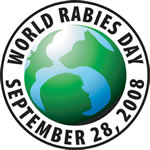Newsroom Story Ideas Archive
Archive: March • February • January • December • November • October • September
March Story Ideas: The Road to Good Health
You Make Me Feel Like a Natural Woman

There are more than 150 million women in the United States. They work in all professions, play every sport and everything from the air they breath to the medicine they use affects them. As mothers, teachers, businesswomen, nurses and more, women impact every aspect of our lives. Help celebrate Women’s History Month by making sure the women in your community are achieving longer, healthier, and safer lives.
- Timeline of CDC/ATSDR’s Contributions to Women’s Health
- Women’s health campaigns and projects
- Assisted reproductive technology success rates
- HIV/AIDS among women
- Intimate partner violence
- Women’s safety and health issues at work
The Cost of Healthy Living

The bottom line is on the top of everyone’s mind these days. But can pinching pennies and eating healthy equal a better you? Your readers are looking for ways to eat healthy, keep up with the proper nutrition guidelines and still have some money left over. Adding fruits and vegetables to their diet can reduce the risk of chronic diseases, including stroke and perhaps other cardiovascular diseases, and certain cancers.
- Health benefits of eating fruits and vegetables
- Fruits and vegetables recipes
- Tips sheets on adding fruits and vegetables to your diet
- Eat more, weigh less?
Staying Safe in the Safest Place

Comfy beds, edible food and perhaps even bunny slippers might make hospitals more appealing, but what about safe? Increasingly, hospitals have become the setting for serious health threats, ranging from staph infections like MRSA to urinary track infections to pneumonia. In American hospitals alone, healthcare-associated infections account for an estimated 1.7 million infections and 99,000 associated deaths each year. You might not be able to do anything about the lunch servings, but you can educate your readers on the threats to their safety in hospitals.
- What is CDC doing to prevent healthcare-associated infections?
- Hand hygiene in healthcare settings
- Tips on medication safety
- Tips on injection safety
Healthy Aging

Life flies by. Somewhere between elementary school and high school graduation, the beginning of college and that first promotion, the first date and your tenth anniversary, it hits you. Billions of dollars are spent each year, directly and indirectly, to treat preventable diseases like diabetes, obesity and complications from smoking. With life expectancy at a record high, make sure your readers and their families get the necessary information to see that college graduation, move to the corner office and celebrate a 25th anniversary.
- Take five for health: things to do in five minutes or less to stay healthy at any age
- Caregiving tips for families with special needs
- Safe and healthy kids and teens
- College health and safety
Don’t Lose Sleep Over It

Sleep, like the economy, is one topic on which everyone has an opinion. In these tough economic times, it’s no surprise that some people are losing sleep and having trouble staying awake during the day. But when does simply not getting enough sleep turn into serious health problems? Help your readers stay on top of their game with some information on healthy sleeping and recognizing the signs of sleep disorders.
- CDC feature on sleep disorders and fatigue
- Podcast on sleep disorders: Not Just Phantoms in the Night
- Press release: Undiagnosed Sleep Problems may Lead to Long Term Health Issues
- Sleep and sleep disorders: A public health challenge
- How much sleep do I need?
- Sleep disorders and symptoms
Way Down to Kokomo

The sun is peaking through the clouds and winter weather is being replaced by chirping birds and yellow daffodils. This might not be the picture where you are, but students across the United States are ready for it and ready to swap out their books and parkas for surfboards and swimsuits. Help make sure they know how to have a good time and be safe.
- Spring break health and safety tips
- Healthy swimming
- What you need to know about vaccinations and travel
- Basics on skin cancer and how to protect yourself
- Youth violence fact sheet

Autism

One month a child is playing with his friends, interacting with ease. The next month his social skills seem impaired and his behavior has changed. Developmental disabilities, especially autism, are serious childhood disorders that affect a person throughout their life. Autism, one of a group of disorders known as autism spectrum disorders (ASDs), begins before the age of 3 and can manifest itself in any number of possible warning signs. Educate your readers, some of whom are parents and teachers, about autism, the misconceptions surrounding the disease and what to do if they think their child has a developmental disability.
- What is autism?
- Statement from HHS on recent omnibus autism rulings
- Lear the Signs. Act Early.
- Autism treatment and therapy
Hi Ho, Hi Ho, It’s Off to Work We Go

The seven dwarves might have enjoyed their job at the mines, but they’re fictional characters and your readers are real, as well as their job problems. Hours may be longer than normal to make up for a shrinking workforce, expectations higher and the rewards not foreseeable in the near future. So now is the time to make sure that your readers are not burned out, exhausted or on the way to serious health issue because of the stress of their job. Use these links to get some ideas on how to make sure America’s workforce is relaxed and ready to go.
- Work organizations and stress-related disorders
- NIOSH quality of worklife questionnaire
- Occupational health psychology
- Addressing demanding work schedules
- Administrative professional health and safety tips
February Story Ideas: Focusing on the Heart
Since 1963 Congress has required the president to proclaim February "American Heart Month." As the No. 1 killer of Americans, cardiovascular diseases, which includes stroke, are a serious public health threat. Below are some ideas to help you help your readers understand how these diseases affect them and how to prevent them.
Newsroom February Story Ideas
The Heart of the Matter

It′s no secret heart disease is the primary killer of men and women in the United States. But did you know that almost half of men who have a heart attack under age 65 die within 8 years? Heart disease is the leading cause for all races except Asian Americans, though it affects races, ethnicities, and genders differently. Getting the basic facts and figures correct will help your readers understand the staggering affects heart disease has on the American population.
- Facts on Heart Disease in Men
- Facts on Heart Disease in Women
- Heart Disease Signs and Symptoms
- Heart Disease Risk Factors
- Heart disease death rates, 2000-4, Adults aged 35 and older by county
- Behavioral Risk Factor Surveillance System (self-reported risk factors for heart disease)
- Common Killers Podcast: A Cup of Health with CDC
Stroke

The risk of having a stroke more than doubles each decade after the age of 55 and more than 160,000 people die each year from it in the United States. As with most health conditions, stroke death rates are higher for African Americans than for whites, even at younger ages. And it has been noted for several decades that the southeastern United States has the highest stroke mortality rates in the country. It is not completely clear what factors might contribute to the higher incidence of and mortality from stroke in this region.
- Stroke Risk Factors
- Outcomes from a Stroke
- Stroke Prevention
- Paul Coverdell National Acute Stroke Registry
All Things Considered, I′m Fine

When you say heart disease, what do your readers think of? The heart attack their neighbor had last month? What else comes to their mind? While coronary heart disease, which can lead to a heart attack, is the most common form of heart disease, there are multiple other life-threatening diseases that affect the heart. Such as angina, chest pain or discomfort that occurs when the heart muscle is not getting enough blood, which is the most common symptom of coronary heart disease. Arrhythmias, such as atrial fibrillation, the quivering of the top right chamber of the heart, affect an estimated 2.2 million adults in the United States. Besides educating your readers, let them know that a heart attack isn′t the only that could happen to them.
And the Beat Goes On

Heart disease and stroke are the first and third leading causes of death among Americans. In 2008 cardiovascular disease cost $448.5 billion in health care services, medication and lost productivity. But what causes heart disease and stroke? Do your readers know what they can do to prevent these diseases? The following factors put people at an increased risk for heart disease and stroke. The links describe the factor and ways to keep then in check to decrease the risk of cardiovascular diseases.
- High blood pressure
- High blood cholesterol
- Tobacco use
- Physical inactivity
- Dietary factors
- Overweight/obesity
- Diabetes
January Story Ideas
Happy New Year! Here are the story ideas for January, along with the 2008 year-end bonus story ideas that look back at the health issues of 2008 and what is to come in 2009.

Sticking to Your New Year′s Resolution
Now that the celebrations are over and the decorations have come down, it′s time to focus on plans for the New Year and the resolutions you′ve made. Whether it′s eating healthier, trying to lose weight, or quitting smoking, the CDC has tips and helpful information to help you help your readers accomplish their goals.
- Prevent & manage stress
- Take folic acid
- Preventing diabetes
- Recommendations, best practices and guidelines for preventing chronic diseases

Health System Transformation
There is a lot of ongoing dialogue about the challenges that lie ahead for President Elect Barack Obama as he tackles one of his top priorities - reforming our healthcare system. The United States spends about $2.1 trillion, about $6,700 per person, on health each year. Right now, 75 percent of our current health expenditures target treatment for preventable conditions caused by tobacco use, poor diet and inactivity, alcohol and drug use, motor vehicle crashes, firearms, and other risks. As the Nation′s health protection agency, the CDC knows full well that “a dime of prevention is worth a dollar of cure.” CDC is in full support of a rapidly expanding movement that includes state and local health agencies, cities, states, small and large businesses, and private citizens that are committed to helping America become a “Healthiest Nation.”
- Alliance for the Healthiest Nation
- Health Protection Goals
- State-by-State Chronic Disease Profiles
- Quick Facts: Economic and Health Burden of Chronic Disease
- Quick Stats: Alcohol Use and Health
- Fastats: Illegal Drug Use
- Motor-Vehicle Related Injuries
- Firearms Laws and the Reduction of Violence


Protecting U.S. Borders
While the Department of Homeland Security works to protect U.S. borders from terrorists, the folks in the Division of Global Migration and Quarantine at CDC work to protect our borders from another, more discrete threat: infectious diseases. Quarantine, separating and restricting the movement of well people who may have been exposed to communicable diseases such as cholera, plague, smallpox or viral hemorrhagic fevers, has been around since the 14th century when cities experienced plague epidemics. Federal quarantine has only been used once in the last century, during the Spanish Flu of 1918-19.
- The History of Quarantine
- Quarantine stations, including a map of U.S. Quarantine stations
- Animal Importation
- Immigrant, Refugee and Migrant Health

The Importance of Being Vaccinated
Don′t be deceived by imposters who tell you and your readers that it′s too late to get a flu shot, because it′s not. Influenza activity usually peaks in February, so there is still time and enough vaccine available to be protected and help keep others protected. Since the flu vaccine takes about two weeks to provide protection from the flu, now is an optimal time to get vaccinated.
- Get the latest flu activity with the Weekly FluView
- Interim Antiviral Guidance for 2008-09
- Web site and contact information for public health flu clinics

- Information for Specific Groups
Many Notable Accomplishments, Many Challenges Ahead
CDC has faced many challenges and accomplished much in 2008. Many of you covered foodborne disease outbreaks, HIV rates and immunization coverage. Journalists and readers were very interested in obesity, autism and seasonal flu. We think the following stories are worthy of a closer look.

Going Green, Getting Healthy
"Going Green" was a big topic of conversation in 2008 as Americans focused on new ways to reduce their impact on the environment. CDC launched a "Go Green, Get Healthy" campaign to encourage employees to adopt new, healthier habits that are also "green." CDC is using its prevention expertise to address climate change and is preparing for the possibility of health effects related to climate change in the same way it prepares for the possibilities of bioterrorism and pandemic influenza.
Issues for 2009: What can your readers do to be more environmentally friendly – and healthier – in 2009? CDC will continue to research the impact of a healthy community, as well as the impacts of the environment on health. Meanwhile, your readers can take steps to “go green” and get healthy – and, like CDC, get their workplace involved, too!

The Ongoing Challenges of HIV/AIDS
In 2008, CDC released data that used new technology to give the clearest picture to date of new infections in the U.S. – and found that an estimated 56,000 new infections occurred in 2006, an increase of 40 percent over what we previously thought. This more precise data confirmed what we already knew: new infections in the U.S. remain far too high (although they have remained roughly stable since the late 1990s, which is a sign of progress). The data was a wake-up call to the nation that more should be done for HIV prevention.
Also, this year, our data showed that more than 1.1 million Americans are living with HIV, and that approximately 20% of those – 1 in 5 – are unaware of their infections. While undiagnosed infections have declined in recent years, too many who are infected remain unaware and may be unknowingly transmitting infection to others.
Issues for 2009: In the U.S., the impact of HIV and AIDS continues to be most severe for men who have sex with men, as they account for approximately half of new infections and of those living with HIV. African-Americans and Latinos are also significantly burdened. Continued reporting on the disproportionate burden for these groups is needed.

Prevention, Prevention, Prevention
Prevention is a message that bears repeating. Diabetes, obesity and heart disease were top stories in 2008. While chronic diseases are the leading causes of death and disability in the U.S., they are also among the most preventable illnesses.
Issues for 2009: Obesity will continue to be a big issue in 2009 – for kids and adults. And with obesity comes a greater risk of chronic disease. As baby boomers get older, prevention and treatment of chronic illness that tend to affect older Americans will become a hot topic. Chronic diseases have a huge, measurable impact at the local level, so prevention should be a community affair.

Smart Protection from Serious Disease
Immunizations and vaccine–preventable disease issues kept many CDC scientists busy in 2008. Flu vaccines were recommended for children up to age 18 for the first time and the shingles vaccine was recommended for senior citizens. Rotavirus cases were down in infants , most likely due to a new vaccine. We are seeing low levels of most vaccine-preventable diseases. Unfortunately, this success has had an unintended consequence: many parents and health providers are no longer familiar with these diseases – and some are questioning the need for, or timing of vaccines. This may be why more measles cases were reported in 2008 than during the same period in any year since 1996.
Issues for 2009:
Many reporters (and readers) still have questions on immunizations and vaccine-preventable diseases. The conversation over autism and vaccination is sure to continue, and parents will need balanced stories to help them make informed choices for their children.
CDC experts are available to discuss these and many other questions.

CDC: Working All Over the World
2008 was a busy year for CDC employees throughout the world. CDC staff were present in more than 50 countries in 2008. Despite many challenges , like post-election violence in Kenya, an earthquake in China, and devastation after Cyclone Nargis in Myanmar, CDC continued its public health and global disease detection work.
Issues for 2009:
CDC will continue its work detecting disease and helping people throughout the world in 2009. We will keep working with foreign Ministries of Health to strengthen local public health systems. CDC will maintain active support of our Field Epidemiology Training Program . This program, modeled after CDC's Epidemic Intelligence Service , helps countries like Kenya set up dynamic public health organizations and train local public health workers to respond regional issues. Want to learn more about our global health efforts? CDC experts with international experience and interesting stories to tell are available for interviews.

Health for All, and All for Health
While great strides have been made in disease prevention this year, ensuring health equity and eliminating health disparities remain a challenge. In 2008, progress was made in vaccination coverage among minority groups, but there is still work to be done in many other areas.
Issues impacting good health go beyond insurance coverage and the availability of health care. Hypertension, infant mortality, and tuberculosis still affect African-Americans at disproportionate rates even when they have access to care. Today's youth are engaging in fewer risky behaviors like drinking and smoking, than youth in the 1990’s, but the numbers of Hispanic youth who drink alcohol and smoke remain comparatively high. And Asian-Americans bear the greatest burden of chronic hepatitis B. These examples of health disparities represent the need for multi-faceted approaches for improving health.
Issues for 2009: As a new year begins and America begins a new focus on healthcare reform, we must not forget the health disparities that exist today. The promotion of healthy behaviors, health equity, and awareness of cultural differences other social determinants of health will be topics of discussion for the New Year.
December

Don′t Lose Sleep over the Holidays
Readers are busy this holiday season, but one thing they shouldn′t skip is a good night′s sleep. Losing sleep can mean more than just feeling tired. Health problems, such as obesity and depression, and unhealthy behaviors like smoking and heavy drinking are associated with not getting enough sleep. A CDC study revealed that 10 percent of Americans don′t get enough sleep on a daily basis.
- CDC Sleep & Sleep Disorders Information
- CDC Study Reveals Adults May Not Get Enough Rest or Sleep
- Podcast: No Rest For the Weary
- Sleep e-card

Baby, It′s Cold Outside
The snow has started to fall and your readers are beginning to feel the chill that comes with winter weather. Extreme cold, or even prolonged exposure to cold temperatures, can cause health emergencies including hypothermia and frostbite. The following links offer tips on preparing your home and car for the winter, along with information on understanding wind chill.
- Extreme Cold: A Prevention Guide to Promote Your Personal Health and Safety
- Winter Weather
- PSAs on preventing and treating hypothermia and frostbite

Holiday Health Tip: Avoid Binge Drinking and Drive Safe During the Holidays
Although college students commonly binge drink, 70 percent of binge drinking episodes involve adults over age 25 years, so as your readers celebrate the holidays or ring in the New Year, they should make this season a safe one. Remind them that binge drinking not only can lead to health problems – it can also put them and their loved ones at risk. In fact, alcohol misuse is the leading risk factor for serious injury in the United States.
- CDC: Alcohol and Public Health
- Quick Stats
- Alcohol FAQs
- Formatted Article: Why Alcohol and Pregnancy Don′t Mix.

Preparing Food during the Holidays
Foodborne disease infections cause an estimated 76 million to become sick each year. Don′t let common foodborne diseases like Salmonella or E. Coli ruin your holiday party. Instruct your readers on the best ways for keeping a germ-free kitchen or use these formatted articles instead.
- An Ounce of Prevention Keeps the Germs Away brochure
- Holiday Cooking: Keeping it Safe!
- Holiday Food Safety Podcast
- Be “Food Safe” During the Holiday Formatted Articles

Rigging up Those Lights
Hanging lights, chopping down a Christmas tree, braving the crowds to get the perfect gift. Each of these activities are holiday traditions, but they share something else in common: the risk of injury. In 2007 more than 6,000 people were hospitalized due to holiday-related injuries according to the National Electronic Injury Surveillance System All Injury Program. Put together some tips for your readers on how to avoid common holiday-related injuries.
- Fall-Related Injuries During the Holiday Season
- Holiday Health and Safety Tips
- The 12 Ways to Health Holiday Song

Where in the world is CDC?
Take your readers on a journey to the land of the midnight sun. They probably associate CDC with exotic locales and tropical diseases, but probably don't realize that CDC has an active presence in our northernmost state. CDC′s Anchorage, Alaska location houses the Arctic Investigations Program (AIP). Working to understand and eliminate health disparities among Arctic and Subarctic people, especially Alaska Natives and American Indians, the AIP began in 1948 and has a staff of over 35 people. Priority projects include reducing the burden of vaccine-preventable infections and infections that lead to chronic disease (e.g., Helicobacter pylori and hepatitis) in these population groups. In April 2008, the AIP team released the first study to show an association between lack of in-home running water and prevalence of respiratory and skin infections. The team partners with Alaska state and local health departments and the Alaska Native Tribal Health Consortium, and is active in the Arctic Human Health Initiative, the International Polar Year, and the International Circumpolar Surveillance Network.
- CDC′s Arctic Investigations Program
- AIP′s History
- CDC and International Circumpolar Surveillance, an Arctic Network for the Surveillance of Infectious Diseases
- CDC Press Release: Study Shows Rural Alaska Natives without In-Home Running Water Suffer More Disease
- Cancer Incidence Among Native Americans and Alaska Natives
- Native American and Alaska Native Vaccination Schedules
November

November is American Diabetes Month
Diabetes now affects 24 million people according to the 2007 National Diabetes Fact Sheet. Diabetes is the sixth leading cause of death in the United States. African Americans, Hispanics and Native Americans are at increased risk of developing diabetes. Your audience may be interested in lifestyle changes they can make to help prevent or delay diabetes such as eating right and being active.
- Data and trends
- Diabetes: Disabling Disease to Double by 2050
- CDC authored study in the American Journal of Obstetrics & Gynecology on diabetes and birth defects
- Power to Prevent: A Family Lifestyle Approach to Diabetes Prevention – African American diabetes education
- Through the Eyes of the Eagle – diabetes education for Native American Children

Preparing Food During the Holidays
Foodborne disease infections cause an estimated 76 million to become sick each year. And with the recent salmonella outbreak, determining when and from what food an outbreak will strike is unpredictable. Instruct your readers on the best ways for keeping a germ-free kitchen or use these formatted releases instead.

Healthy Traveling
As Americans gear up for holiday travel, it’s important for your readers to be proactive, prepared and protected when it comes to their health. CDC’s yellow book includes information on country-specific tips, a new guide to preparing a travel kit and travel notices.
- Yellow Book: International travel with infants or young children
- Special needs traveling
- Travel health tips for students studying abroad

Sharing Your Family History:
Did you know that your mother’s arthritis might run in the family? As one of many chronic diseases like heart disease, diabetes and cancer, arthritis could affect anyone in the family. Suggest that when your readers get together during the holidays, they talk to the rest of the family and create a family to know their potential health risks.
- Collecting Your Family History Could Save Your Child’s Life formatted release
- Use of Family History Information in Pediatric Primary Care and Public Health: A Supplement to the Journal Pediatrics
- National Office of Public Health Genomics Family History Tools & Resources
- U.S. Surgeon General’s My Family Health Portrait

The Great American Smokeout:
Did you know that half of all Americans who continue to smoke will die from smoking-related diseases? Each year, smoking accounts for an estimated 438,000 premature deaths, including 38,000 deaths among nonsmokers as a result of secondhand smoke. Celebrated November 20th, the Great American Smokeout is sponsored by the American Cancer Society and encourages smokers to commit to a smoke-free life. Help your readers kick the habit with information from the following links.
- Data and statistics
- Exposure to second-hand smoke
- Surveillance of Cancers Associated With Tobacco Use
- Smoking Rates Highest Among People with Disabilities
- The Great American Smokeout Challenge
October

International Conference on Rabies,
September 29-October 3:
CDC′s 19th international conference on Rabies in the Americas (RITA) is the largest international rabies conference and will be hosted this year at the CDC. Highlights of the conference will include an appearance by a recent human rabies survivor in the United States, and the signing of a North American Rabies Management plan.
- XIX International Conference on Rabies in the Americas (RITA) Conference Site
- CDC information on rabies

World Non-Violence Day, October 2, 2008:
CDC estimates that over 1.6 million deaths worldwide occur as a result of violence, 96 percent of which occur in low- and middle-income countries. Violence is among the leading causes of death in all parts of the world for those ages 15 to 44. Use these resources to help find out more about stopping the violence.
- CDC′s Violence Prevention
- Timeline of Violence as a Public Health Issue
- World Health Organization (WHO) World Report on Violence and Health

Hurricane Safety:
Hurricane season is not over yet, and part of being prepared is knowing what to do after the storm has passed. These resources will help you be prepared before, during and after a hurricane.
- Latest Hurricane Updates
- Checklist for People in Path of a Hurricane
- CDC Urges Caution When Cleaning Up Mold

Halloween Safety:
As the ghouls and goblins come out to play, find tips to make this Halloween fun and safe.

Breast Cancer Awareness:
In 2004, 186,772 women were diagnosed with breast cancer, and 40,954 women died from the disease. Help recognize and support the women who are fighting this disease.
- Breast Cancer
- National Breast and Cervical Cancer Early Detection Program
- Screening For Breast Cancer
- Men Against Breast Cancer

Deep Vein Thrombosis:
More than 60,000 Americans die each year from venous thromboembolism; in addition, nearly half of patients with deep vein clots experience long-term health consequences that adversely affect their quality of life.
- Facts About Deep Vein Thrombosis
- Tips to Help Prevent Deep Vein Thrombosis
- Thrombosis and Hemostasis Centers

Health Insurance:
According to the National Health Interview Survey, 43 million Americans under age 65 were uninsured in 2007.
- Early Release of Selected Findings from the National Health Interview Survey
- Healthy People 2010: Access to Quality Health Services
- MMWR Article on Certain Health Behaviors and Conditions Among States and Local Areas

Down Syndrome:
Down Syndrome is the most commonly identified cause of mental retardation and occurs in approximately 1 in 800 births. October is recognized as National Down Syndrome Awareness Month.
- Basic Facts About Birth Defects
- Risk Factors of Down Syndrome
- National Birth Defects Prevention Study
September

Worker Safety
With Labor Day just gone by, it′s important to remember that workers are staying safe on the job. The following links go to CDC′s features on workplace safety and statistics on work-related injuries.

Return to School
As kids return to school, so do the germs. The following links provide information on CDC′s recommended vaccine schedule and highlight some adverse affects of not receiving vaccinations.

Grandparents′ Day
For Grandparents′ day, celebrated every Sunday after Labor Day, it′s time to recognize the grandparents of the world. The following links include resources for healthy aging and recommendations for vaccinating seniors
- Healthy Aging for Older Adults
- Adult Vaccination Schedule
- Traumatic Brain Injuries and Seniors
- CDC Recommends Seniors Get Shingles Vaccine
- Ovarian Cancer (more common among older adult women)

Be Prepared
September is National Preparedness Month. The following links provide information about this year’s theme and what to do in case of an emergency.

Infant Mortality
September is National Infant Mortality Awareness Month. The United States ranks 23rd among industrialized nations in the world in infant mortality.

Hispanic Heritage Month
Hispanic Heritage Month begins September 15th, the anniversary of independence for five Latin American countries—Costa Rica, El Salvador, Guatemala, Honduras, and Nicaragua. In the 2000 U.S. census, more than 38 million people identified themselves as Hispanic/Latinos. The following links provide information on Hispanic health issues.
- ATSDR Hispanic Health Program
- Office of Minority Health – Hispanic or Latino Populations
- Immunization Schedule en Español
- Health Risks and Disparities Experienced by Hispanic Youths
- HIV Incidence for Hispanic/Latinos
- Hispanic Health Fast Stats

World Rabies Day
World Rabies Day is September 28, 2008. Rabies kills more than 50,000 people and millions of animals around the world and has been reported in every U.S. state except for Hawaii.

World Heart Day
World Heart Day, September 28th, reminds us all we need to keep the beat going strong. Find resources on heart disease and more below.
Coming Next Month
Next Month... look for ideas about Halloween safety, properly preparing food during the holidays, breast cancer awareness, hurricane safety and world non-violence day.
- Historical Document: March 3, 2009
- Content source: Office of Enterprise Communication
- Notice: Links to non-governmental sites do not necessarily represent the views of the CDC.
Get e-mail updates
To receive e-mail updates about this page, enter your
e-mail address:
Contact CDC:
- Centers for Disease Control and Prevention
1600 Clifton Rd
Atlanta, GA 30333 - 800-CDC-INFO
(800-232-4636)
TTY: (888) 232-6348
24 Hours/Every Day - cdcinfo@cdc.gov

